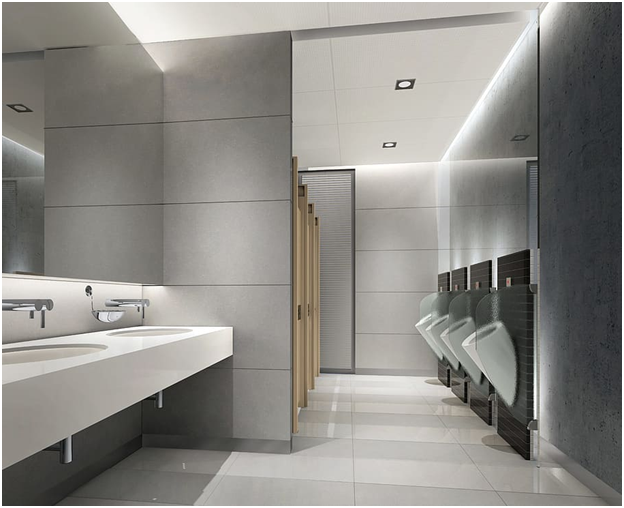![[Source: Pxfuel ]](https://fabbaloo.com/wp-content/uploads/2020/05/Touchless-Bathroom_img_5eb0654049bbe.png)
[Source: Pxfuel]
Charles R. Goulding looks into the use of 3D printing to make public bathroom spaces “touchless.”
In this writer’s opinion, the world is no longer going to accept any hand-touch functions in commercial bathrooms. We have all seen examples of touchless fixtures and devices for every function in a bathroom, including:
-
Faucets
-
Soap Dispensers
-
Toilets
-
Hand Dryers
-
Stall entrances
For bathroom entrances and exits, swing doors eliminate the need for doorknobs. Bathrooms that need to be locked for security purposes can be unlocked by voice-command codes. For new buildings and substantial renovations, building codes can be revised to require that all commercial building bathrooms have touchless equipment. Multi-occupant bathrooms need to have enough space to enable some minimum level of social distancing.
3D printing can be used to design and produce a wide variety of new bathroom touchless fixtures and innovative hardware that eliminates the need to “switch on” or touch for intended functionalities.
Kohler Corporation, bath and kitchen plumbing equipment powerhouse, is already at the forefront of innovation in this area, producing functional products with voice-enabled, smart home capabilities and 3D printing.
Existing buildings that don’t plan on integrating these germ and virus reducing upgrades should be avoided by health-conscious customers. R&D tax credits may be available for companies designing, testing and producing touchless bathroom equipment and subcomponents using 3D printing techniques.
The Research & Development Tax Credit
Enacted in 1981, the now permanent Federal Research and Development (R&D) Tax Credit allows a credit that typically ranges from 4%-7% of eligible spending for new and improved products and processes. Qualified research must meet the following four criteria:
-
Must be technological in nature
-
Must be a component of the taxpayer’s business
-
Must represent R&D in the experimental sense and generally includes all such costs related to the development or improvement of a product or process
-
Must eliminate uncertainty through a process of experimentation that considers one or more alternatives
Eligible costs include US employee wages, cost of supplies consumed in the R&D process, cost of pre-production testing, US contract research expenses, and certain costs associated with developing a patent.
On December 18, 2015, President Obama signed the PATH Act, making the R&D Tax Credit permanent. Beginning in 2016, the R&D credit has been used to offset Alternative Minimum Tax for companies with revenue below $50MM, and startup businesses can obtain up to $250,000 per year in cash rebates applied directly toward payroll taxes.
Conclusion
Public bathrooms are high-traffic environments that would benefit from the use of advanced technologies like 3D printing to help make them more minimal-contact spaces.

